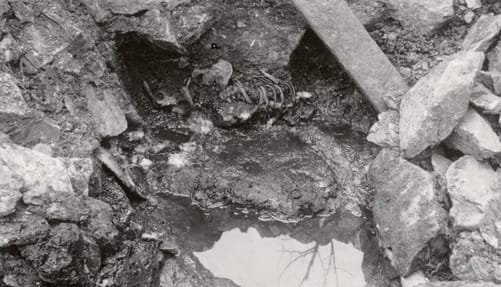Thanks to sophisticated ancient DNA analysis on a body discovered at Sverresborg Castle, researchers have made revolutionary findings about the Well-man depicted in the old Norse Sverris Saga. While setting a new benchmark for the following research on historical characters, this creative study combines contemporary genetics, archeology, and history to expose clues about the identity and ancestry of the Well-man.
What Historical Context Surrounds the Sverris Saga?
The Sverris Saga, an 800-year-old chronicle of King Sverre Sigurdsson, describes a military raid in AD 1197. As part of this dramatic incident, a body was reportedly thrown into a well at Sverresborg Castle, close to Trondheim in central Norway. This conduct underlined the great strife of the time and was probably meant to contaminate the primary water supply for the local population.
What Are the Groundbreaking Research Findings?

A new study reveals fresh information about the Well-man and shows how scientists used ancient DNA to support the events detailed in the legend. This work harmonizes current scientific approaches with archaeology and history and sets a standard for future historical figure research.
A Norwegian University of Science and Technology professor comments, “This is the first time a person described in these historical texts has been found.” “There are many of these medieval and ancient remains all around Europe, and they’re progressively being studied using genomic techniques.”
How Were Historical Remains Rediscovered?
Bones found in the well at Sverresborg Castle in 1938 had only been visually examined since modern tools were not available then. However, modern gene-sequencing technologies and radiocarbon dating have let scientists create a more complex image of the Well-man. Radiocarbon dating has verified that the remains are about 900 years old; earlier research revealed that the man died between 30 and 40 years of age.
“The text is not correct—what we have seen is that the reality is much more complex than the text,” says a Norwegian Institute of Cultural Heritage Research archaeologist.
What Genetic Revelations Have Been Made?
This research benefited greatly from the efforts of a Norwegian University of Science and Technology researcher. As part of his doctorate studies, he sequenced his DNA using samples from a tooth taken from the Well-man’s skeleton. Based on this study, the Well-man most likely had blue eyes and possibly blond or light-brown hair; his ancestral origins most certainly came from the southernmost Norwegian county of today, Vest-Agder.
Thanks to an enormous collection of reference material from modern-day Norwegian genomes, enabled by cooperation with a genetics professor at deCODE Genetics in Iceland, the research team could deduce the Well-man’s ancestry. “Most of the job we do depends on reference data,” he says. “So the analysis will be better in the future the more ancient genomes we sequence and the more modern people we sequence.”
What Are the Limitations and Ethical Considerations of This Research?
Although this technology shows great promise, it is not without limits. Grinding the tooth into a powder allowed the outer surface to be removed from the Well-man’s tooth, preventing contamination from handlers during excavation. As a result, researchers could not examine any diseases the Well-man could have carried at the time of death, and the sample could no longer be used for any studies.
“There are lots of ethical questions; it was a compromise between removing surface contamination from the people who have touched the tooth and then removing some of the possible pathogens.” says the researcher. “We have to think about the kind of tests we are currently doing since they will restrict our future possibilities.”
What Future Research Aspirations Do the Researchers Have?
Plans call for the researchers to examine samples from other historical figures. “The important Norwegian Saint Olaf is thought to be buried somewhere in Trondheim Cathedral,” one investigator notes. “So I think that if eventually his remains are uncovered, there could be some effort to describe him physically and trace his ancestry using genetic sequencing.”
How Is This Research Signaling a New Era in Archaeology?
Considering the ramifications of this creative approach that combines science and history, an archaeologist says, “It’s a fantastic result of what this method can bring to archaeology in such a strange or rare context like this.”
This study was published in iScience. The Norwegian Research Council, the NTNU Onsager Fellowship, the Carlsbergfondet Semper Ardens Award, and the Norwegian Institute of Cultural Research supported the work.

